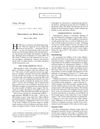TLDR Co-trimoxazole successfully treated a girl with multiple autoimmune symptoms.
The document discussed a case of alopecia areata and relapsing polychondritis treated with co-trimoxazole. Initially, the patient received intravenous augmentin (1 g every 8 hours) for 5 days, which resulted in sustained diffuse oedema and erythema of the auricle, sparing the ear lobe. Upon switching to a combined treatment of prednisone (40 mg/day) and co-trimoxazole (50 mg/kg/day), there was a marked reduction in oedema and erythema within 2 days. This case suggested that co-trimoxazole might be effective in treating these conditions.
13 citations
,
July 2003 in “Annals of the Rheumatic Diseases” Co-trimoxazole successfully treated a girl with multiple autoimmune symptoms.
62 citations
,
April 2002 in “Journal of the American Academy of Dermatology” Sulfasalazine may help regrow hair in severe alopecia areata cases.
 370 citations
,
September 1999 in “The New England Journal of Medicine”
370 citations
,
September 1999 in “The New England Journal of Medicine” Finasteride and minoxidil are effective for hair loss, but continued research is needed for better treatments.
48 citations
,
April 2021 in “Journal of the American Academy of Dermatology” Topical corticosteroids are the best initial treatment for children's alopecia areata.
5 citations
,
July 2003 in “Annals of the Rheumatic Diseases” An antibiotic called co-trimoxazole can effectively treat autoimmune diseases.
51 citations
,
July 2003 in “Annals of the Rheumatic Diseases” Co-trimoxazole may help treat autoimmune diseases.
8 citations
,
July 2003 in “Annals of the Rheumatic Diseases” A 13-year-old girl with various symptoms was successfully treated with an antibiotic called co-trimoxazole.
32 citations
,
July 2003 in “Annals of the Rheumatic Diseases” A 13-year-old girl with various symptoms was successfully treated for autoimmune disease using the antibiotic co-trimoxazole.


